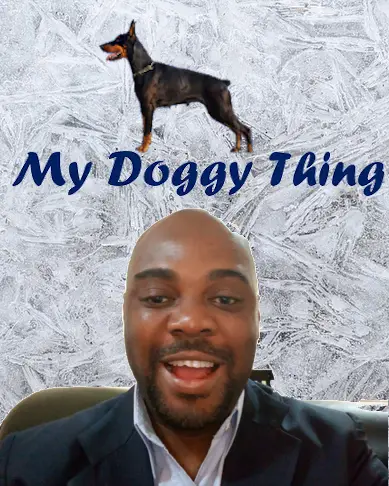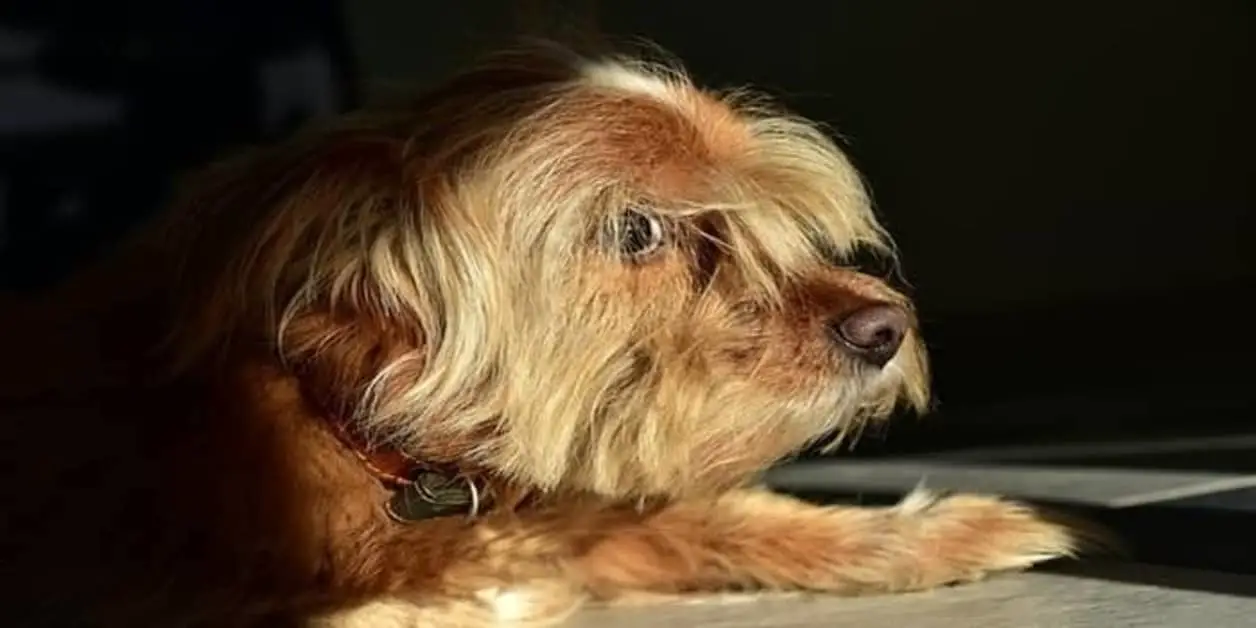For most of us pet parents, it is surprising to notice how easily our dogs can get bored. Most dogs that don’t have something to engage in for a long time end up making some kind of fuss. Some of the activity they engage in can be harmless. In such cases, there is not much concern. but when they start eating their hair, then it is a real cause for concern. Because dogs don’t communicate in human language, it is usually hard to know when they have ingested their hair and how far the damage caused is (Yes! A dog eating its hair is not a problem to be taken lightly).
A dog that has been eating its hair for some time is likely to end up with what is called a bezoar. This is a mass of hair that has grown to a size where it blocks the intestines thereby preventing passage of food. As you can imagine, this is a terrible condition for your dog to be in.
So when you notice that your dog has been ingesting or eating too much of its hair. What do you do?
You can start by giving him or her fat emulsifier, adding extra fibre to your dog diet and also feeding them with digestive gels and lubrication pastes. This is to initiate the process of assisting the dog in passing out the mass of hairball stuck in his digestive system out, as part of its waste product more easily.
.
.
Before we go into more details, you should note that this is just to manage the problem until a final solution is reached.
1.Fat Emulsifier for your dog.
If you believe that your dog is having problems because of swallowing its hair, you can give him or her some fat emulsifier to help reduce the discomfort. A perfect example of what you can give your dog is soy lecithin. Now there is a lot of debate going on whether or not soy is good enough for pet consumption, but the real active emulsifier ingredient here is the lecithin. Lecithin acting as an emulsifier can help dissolve the fat around the mass of hair (sometimes called hairball). This makes it easier for the dog to eliminate the hairball.
In addition to lecithin acting as an emulsifier, studies have also shown that they are very good at stimulating the memories and learning abilities of our dog, so in addition to expelling the harmful mass of hair causing our dogs discomfort, they also help to make our dogs healthier (Most dog trainers would advise that we put our dogs on lecithin before starting a dog training program)
Some foods that contain high quantities of lecithin are egg yolk, fish eggs, seeds and nuts, soybeans etc. It is of prime importance to ask your vet for advice on the best source of lecithin for your dog and also the dosage.
2. Adding extra fiber to your dog’s diet.
Yes, fiber is not only an important part of the diet for a human being, but it is also a critical part of the diet for your dog. Extra fibers help to improve bowel movements in your dog, which in turn improves the digestion process. As you can see anything that helps the digestive process can also assist in expelling the accumulated hairball in our dog’s system.
Fortunately for us, fiber is available naturally in abundance and there is a wide range of choices that our dogs can choose from. Oats, brown rice, and some vegetables like carrots, broccoli, and sprouts are some of the options available to us to help increase fiber intake for our beloved dogs.
It is worth noting that most commercial dog products usually contain fiber. Why we mentioned the above choices is because natural food rich in fiber assists in faster resolution of the problem that most artificial mix. As with the above option, first give your dog natural high fiber foods in moderation, contact your vet doctor to find the proper dosage for your dog.
In addition to assisting in digestive issues, the extra fiber in your dog’s diet is also known to help diabetic dogs get better and also deal with weight management issues in dogs.
3. Digestive gels and lubrication pastes.
As the name implies, these digestive gels and lubricants are great in assisting dogs with digestive problems. There is no natural supplement for these. They are mostly over the counter products.
These gels and lubricants contain electrolytes, vitamins, amino acids, fatty acids, and lactic acid bacteria. A combination of these helps to improve your dog’s digestive system, immune system, and general overall health.
They are mostly given as treats or mixed with dog food to improve the flavor for your dog. Unlike the two options mentioned above, these gels and lubricants can only be given under directives from your veterinary doctor.
4. Grass.
This is more like a self-help thing in the doggy world. When dogs have tummy issues, they tend to look for grasses to eat. Eating grass irritates the dog’s stomach linings which usually leads up to the dog vomiting whatever is causing issues for him or her discomfort. In this case the mass of hair.
The downside to this is that most grasses nowadays are chemically treated. These chemicals end up causing more harm to our dogs than good. Whenever we notice our dogs eating grass, we should use it as an indication that he or she might be experiencing digestion problems and book a visit with our veterinary doctor.
So far, we have dealt with last-minute solutions to your dog’s hairs eating problem (much like first aid after the harm has already been done), but to deal with this problem completely, we need to understand the root causes.
As I stated earlier, boredom can lead to a dog licking and eating its own hair. But in addition to this stress, separation anxiety, medical conditions, and compulsive behavioral problems can lead to this problem. It is worth noting that our dogs don’t gain anything from licking their own hair apart from some form of temporary pleasure.
Apart from the loss of hair and unsightly patches all over the dog. He or she can develop what is called lick granulomas. These are infections on the surface of the dog’s skin and are very painful to our dogs and most often, very very difficult to heal.
Boredom.
Even for human beings, boredom can be a huge problem. When we find ourselves idle for a long period, we find ourselves having strange thoughts and engaging in funny activities. The same thing applies to our dogs. Boredom can lead to so many strange actions from our dogs and one of them is eating their hair. Some signs of boredom in your dog can be destructive behavior, Velcro Dog syndrome and attention-seeking.
You can start engaging your dog in mental activities and exercises to reduce the boredom. To make this solution more effective, put it on a timely routine e.g a walk at 6 a.m every morning. Dogs are creatures of routine and a timely cycle of when things are to occur helps your dog to adjust his or herself properly. Mental activities, like using kong toys with treats can help to keep your dog engaged for a long time.
There is an old saying which goes, “an exhausted dog is a good dog”. Sounds funny but true. A tired dog doesn’t engage in funny activities like eating its hair.
Stress.
A dog can be stressed out due to different reasons, lack of routine activities to follow, noise, lack of mental stimulation and you. Yes, we can give our dogs stress by expecting too much from them but not training them enough on how they can please us. This creates stress in our dogs and can lead to excessive licking and eating of its hair.
The solution is similar to that of boredom, mental stimulation and exercise with a little dose of love can help your dog feel calm and relaxed around you.
Separation anxiety.
This is usually exhibited by your dog if they are not properly trained and engaged mentally. It happens when the dog finds himself or herself separated from their pet parent for some time. You find that the dog engages in some destructive behaviour and habits which can be harmful to him or her.
She may try to escape the environment through places that can harm her, urinating and defecating in wrong places, barking and howling and yes eating their hair.
Finding ways to engage your dog mentally during the period you are gone is going to help minimize their separation anxiety problems. You may also consider dog training for your dog to give him or her a clearer insight of your expectation of him.
Medical conditions.
The list of dogs medical conditions are a lot, but skin allergies and infections can lead to your dog licking and eating its hair to get some relief. If you believe that you have given your dog all the required attention, training and mental stimulation, but he or she keeps eating their hair then a visit to your veterinary doctor for proper diagnosis would be required.
Compulsive Behavioral Problem.
Your dog licking and eating its hair can be a result of a compulsive behavioral problem. In its most simple form, compulsive behavior can be defined as repeated behavior or act done continuously. This act is repeated without reason even to the detriment of the perpetrator.
There are many acts by dogs that can fit into this category e.g spinning, tail chasing and Dog eating hair continuously. There are medications by your vet that can assist in solving this problem, but final solution comes only from proper dog training classes, either by you or by a verified trainer.
Your dog would need a stronger emotional attachment to something else for him or her to quit this behavior.
In summary, be watchful and follow the suggestions listed above, you will find it easier to manage your dog’s hair eating condition and give you a healthier dog.

Hi, I am Charles Nwankwo Editor-in-Chief, Mydoggything.com. Gleaning from Professional Dog Trainers, behaviorist, Registered Veterinarians, and Breeders. We are passionate about making dog care easy for you. My job is to make sure that you get the best-updated dog care information to understand and take care of your dog or dogs.

